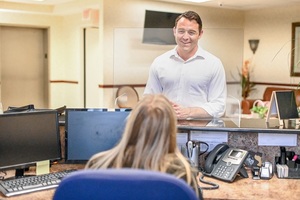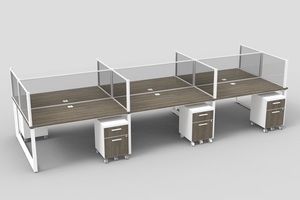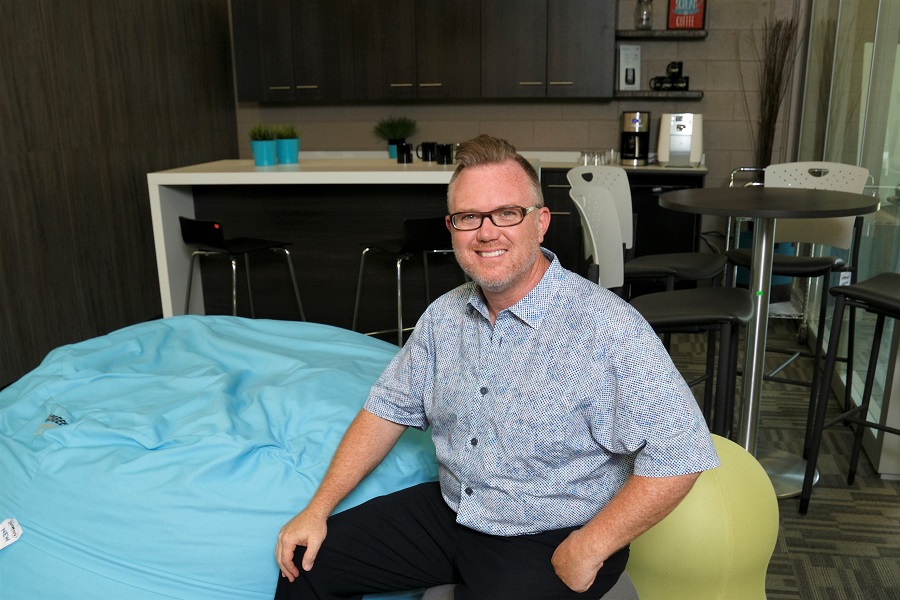Workspace redefined
Bye-bye open spaces: Rodney Lover of Lovers atWork sheds light on creating post-lockdown environments that will keep workers healthy, safe and productive
Photo: Lovers atWork Office Furniture director of sales & marketing, Rodney Lover
AFTER DECADES OF trending towards collaborative, open and shared spaces, offices hoping to reopen after the coronavirus shutdown are rapidly switching gears in favour of privacy, separation and social distancing.
Many of the offices that employees left back in mid-March won’t look the same, at least for the foreseeable future, as social distancing moves to the workplace. Gone will be bench-style seating, communal coffee stations and open office plan, replaced by furniture and designs with far more uncool reputations — cubicles, plexiglass sneeze guards and sanitizer stations among them.
“We’ve never had a health-and-safety section on our website,” explains Rodney Lover, director of sales & marketing with Lovers atWork Office Furniture, specialists in office furniture and design services. Lover now describes the company as being “deep into these barriers,” which are selling like hot cakes.
“Everyone wants it immediately,” Lover says, “so we’re up and running.”
The Six-Foot Office
For many employees returning to work, the new “six-foot office” will look like a sparser work environment where people mainly stick to their own areas. Boardrooms and conference rooms will likely have occupancy limits, if they are open at all, and workspaces will be more distant from one another.

In addition, most communal spaces will be closed off, and some workplaces may stagger employee hours to control occupancy. Any areas of the business that are open to customers can expect “some sort of clear barrier” for some time, even as restrictions are lifted. “It’s probably the right thing to do,” says Lover.
A video produced by the real estate firm Cushman & Wakefield (see below) shows what most office employees can expect when they return: signs on the floor to help enforce social distancing, marked walkways to regulate foot traffic, plexi-glass barriers everywhere and six-foot bubbles marked around each workstation. Those sorts of installations are becoming the standard in the post-lockdown economy, Lover says, even if only temporarily.
It’s not going to require reinventing the wheel entirely, adds Lover, and a lot of offices in the city, especially the smaller firms, will be able to make do with the furniture they have — either arranging it in a socially-distant way or by reducing the number of employees working in the building at any one time.
The onus of creating a safe office environment will fall mostly on the people who use it. Lover foresees offices reopening with a renewed focus on “cleanliness, obviously” and repeated communication.
“Verbally and visually, whether it’s posters or floor stickers, we’re all going to need to be reminded,” says Lover, cautioning that the real concern for most offices isn’t going to be layout, but that staff begin to get lax with social distancing as they get used to being back to work.

Time will tell what the eventual equilibrium for office spaces will look like, and even experts assume it will be a trial-and-error process. “I can see that people are expecting this to [last] for 12 to 18 months,” says Lover. “We’ll see what sticks out of all this.”
Lunchrooms, unfortunately, are a long way from returning, Lover says, so employees can expect to eat on their own more often.
“That,” he concedes, “is going to be a sad area.” ![]() Kieran Delamont
Kieran Delamont

